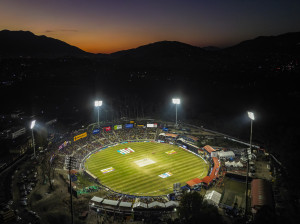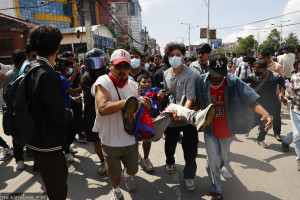Editorial
State of flux
It was only last year that eight Madhesi parties had come together to establish the Rastriya Janata Party Nepal (RJPN). There were a number of reasons underlying the decision to merge these parties. First, all of them shared a joint interest in amending the constitution.
It was only last year that eight Madhesi parties had come together to establish the Rastriya Janata Party Nepal (RJPN). There were a number of reasons underlying the decision to merge these parties. First, all of them shared a joint interest in amending the constitution.
They had already come together as part of the United Democratic Madhesi Front during the protests of 2015 and 2016. In addition, the leaders of these parties were aware that elections to local, provincial and federal governments were coming up.
They were aware that they had performed poorly during the elections in 2013, primarily because they were fragmented into so many different groups, even while seeking to represent the same agenda. Going into the 2017 elections with so many parties between them would have led to a major debacle.
So they put their differences aside, and came together into a single party. This paid handsome dividends. The RJPN performed reasonably well in the local and provincial elections and are now participating in the governing coalition in Province 2.
However, the RJPN does not appear to have managed to reconcile the differences within the party and establish a strong organisational structure. Decision-making was concentrated in the hands of a small group of presidium members.
Naturally, this led to a great deal of resentment among party members who felt that their voices were going unheard. The internal disputes of the party have now erupted into the open—33 of its members, including key office bearers and central committee members, have now declared that they are opening a new party—the Rastriya Janata Party Prajatantrik (RJPP).
The prospective members of this new party claim that they were compelled to do so because the RJPN leaders had failed to adequately represent Madhesis. In particular, they allege that the RJPN has failed to campaign for constitutional amendment. In reality, however, it is evident that the members of the new party were primarily unhappy that they had not been given enough power within the new party.
The RJPN has always faced a number of challenges, especially when compared to its key contender in the Madhes, the Sanghiya Samajbadi Forum Nepal (SSFN). The SSFN led by Upendra Yadav is better organised. Many of its senior members used to be in Communist parties in the past and they have adopted the Communist-party style of cadre-based organisation.
The RJPN, meanwhile, has never given much attention to creating a mass of organised cadre. It is a top-heavy party, with many senior leaders vying with each other for power. The party will not be able to reconcile differences and create a stable party structure until it thoroughly overhauls its party structure.
It will have to expend effort in establishing organisations down to the grassroots so as to keep its members active. And it will have to establish transparent norms for the selection of its leadership, so as to prevent acrimony between top leaders. Such steps are crucial if the party wants to remain a force among the Madhesi constituents.




 11.12°C Kathmandu
11.12°C Kathmandu














